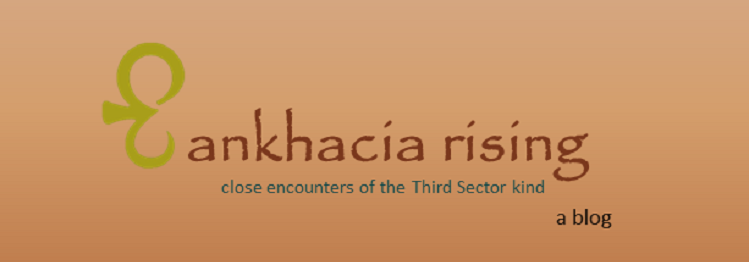Board dysfunction: What’s “type” got to do with it?
/June 27, 2014
Didn’t know yours had a type? Well it does, whether you planned it that way or not. What’s truly sobering though is that that “type” is most likely at the crux of what’s been hindering your NPO’s functions all this time.
Who’d have thunk it?
I’d been following a discussion in a nonprofit group forum I’m a member of on the dysfunction of nonprofit boards, when I read a comment that got me thinking. The contributor, noting the many varied reasons offered to explain the issue, observed that regardless of how small or large an organization is, “dysfunction in the boardroom is not a requirement, but it is a well-known phenomena (sp).
Given how many boards are plagued by dysfunction, I think the reasons for it are as varied as the boards and nonprofits themselves.”
Knowing what I do about boards the contributor was right. Board development is not often a conscious effort to meld personalities and skills sets in order to meet predetermined leadership and organizational outcomes.
It’s more often simply a collection of individuals with varied organization allegiances and purposes for serving. So couldn’t it stand to reason that collectively, these entities take on a persona of their own, based on their relationship with the ED, the culture of the organization and the spoken or unspoken expectations of them? And couldn’t this persona be at the center of an unintended clash between the organization’s ability to achieve its outcomes and the board’s perceived role in achieving those outcomes?
Which are you?
I suddenly felt compelled to find out so, baited by my own question, I began down the rabbit hole of online research and discovered one source excerpted from “Governing for Results: A Director’s Guide to Good Governance” by Mel.
D. Gill that identifies nine different formulations of boards. Among the more commonly known are fundraising boards and advisory boards, whose roles are pretty self-explanatory, leaving not much opportunity for dysfunction, at least as regards their relationship to the other types of boards an organization may have—and yes, there can be several.
More to the point of the forum discussion, though, are those boards charged with management, operations, constituent interests, governance and decision-making in their organizations—the sticky wickets that in the absence of consensus can blur ED/board roles and result in conflicts, inertia and threats to mission accomplishment and organizational stability.
Taking a broad, long-term view on how your organization’s mission and its resulting outcomes should best be realized is one of the first activities that should be undertaken in determining what type of board is needed, what role it should play and how it should work with the ED, if there is one.
Does your board have exclusive responsibility for program implementation and organization management, one or the other, or does it accept limited assistance from a staff coordinator?
Does your board establish committees only for special projects or to provide overall program and organization management oversight?
Does your board give considerable responsibility for policy-making to the ED or is just limited to how those policies are enacted?
Is your board appointed or elected from outside the organization or is selection done by the ED and/or board membership themselves?
All these considerations play a crucial role in creating your board’s persona and way of functioning, and are paramount in setting the stage for your organization’s ability to realize its mission.
Mirror, mirror
I learned from experience how critical this is when the organization I served for as ED had a difficult time transitioning from collective rubber-stamping to collective leadership. They weren’t cultivated to be decision-makers, because the outgoing ED had practically handpicked all the members and given them very little incentive to offer divergent points of view.
They had no orientation and thus were unaware of exactly how best to govern, especially for the types of challenges they were about to face once the ED left.
By the time I came on board all manner of change within the organization was desperately needed, as they readily admitted at the outset, but what they knew in theory and were willing to do in practice were two different things. They did not have the skills sets, training and thus confidence to lead the change, failing to see why the first and most difficult entity in need of change was themselves.
Self-reflection is a difficult exercise but must be practiced regularly in order to detect internal and external changes that could affect how the relationship between the board, ED and mission begin, evolve and mature over time and how those varying states affect the organization’s business.
A vigilant organization could conceivably cycle through a number of the nine types of board formations within their lifespan, in response to what is in the best interest of the organization and its mission. This vigilance could head off dysfunction before it becomes an accepted phenomenon, and in the cases where it does exist, be named and claimed by both the ED and board, with each willingly accepting responsibility for its repair.
Any idea what type of board your NPO is and if that type is helping or hurting its ability to meet mission outcomes? See if you see yours here, check out this blog post for tips on building and maintaining a strong board and share your thoughts below.

